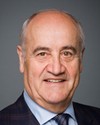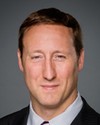Madam Chair, it is great that we are able to get together tonight to discuss the estimates for national defence. It is vital for us to remember how these funds are put to use and impact upon the safety of our country.
Over the past few years the Canadian Forces have been extremely busy and Canadians have taken notice. They have seen and heard reports of the work that has been done by our troops in places like Haiti, Afghanistan and Libya. I welcome the well-deserved attention and credit it gives to our men and women in uniform. However, in many ways, it does not give a complete picture of the work they have done and what they continue to do day in and day out on our behalf and for our benefit. The primary duty of our armed forces is to protect and defend Canadians right here at home.
This sense of priority is reflected in the very title of the guiding document of the Department of National Defence and the Canadian Forces called the Canada first defence strategy. The Canada first defence strategy lays out six core missions that the Canadian Forces members are expected to be able to perform to keep Canada and Canadians safe. Four of them relate directly to what our friends in uniform call the home game. I would like to go over each of these briefly to underscore just how much our men and women in uniform are doing for us domestically and all too often out of sight.
The Canadian Forces members stand ready and able to respond to a major terrorist attack because of their elite counterterrorism unit, the Joint Task Force Two. The unit is ready to respond at a moment's notice because of its healthy partnerships with law enforcement and intelligence agencies.
These relationships also have been extremely valuable in assisting the Canadian Forces members in another of their assigned missions: supporting a major event here in Canada. The Canadian Forces have gained experience in this over the last few years. They supported the RCMP and local law enforcement in providing security for the Vancouver Olympics. Using everything from fighter jets to skis, they monitored and helped secure 10,000 square kilometres of some of the most challenging geography in Canada. The good work helped ensure that the focus of the games stayed where it belonged: on the athletes, not on the security.
A few months later, more than 2,800 Canadian Forces personnel successfully performed a similar task when Canada welcomed world leaders to the G8 and G20 meetings.
Another core mission that the Canadian Forces have undertaken time and again is to support civilian authorities during a crisis right here in Canada. The Canadian Forces have a long tradition in this area, particularly when the crisis in question is a natural disaster. Over the last year or so, our men and women in uniform have been called upon repeatedly to help local authorities with such challenges. In May of last year, the forces responded with roughly 800 personnel to the worst flooding the Richelieu Valley and Montérégie region had seen in over a century.
Simultaneously, nearly 2,000 troops and several aircraft were dispatched to help deal with the flooding along the Assiniboine River right in Manitoba, where they helped coordinate and carry out a broad effort in sand-bagging, evacuation, infrastructure protection and logistical assistance. On behalf of my constituents of Selkirk—Interlake, I want to thank the Canadian Forces again for the work they did along Lake Manitoba.
Later that summer, just under 400 soldiers were deployed to Souris, Manitoba, again to help reinforce dikes near the town in the face of yet more flooding. Members of the Canadian Forces spent much of July working to evacuate over 3,600 residents from several of Ontario's northern and first nation communities that were threatened by forest fires. I want to thank the members of the Canadian Forces for their heroic work right across Canada, giving us peace of mind knowing they are always standing by and ready to serve during times of need.
Regardless of which contingency missions the Canadian Forces may be undertaking at any given time, they are also responsible 24/7 and 365 days a year for the fourth mission laid out in the Canada first defence strategy: the conduct of daily domestic and continental operations. The activities carried out under this umbrella are as diverse as they are important. They are the ones the forces plan for in advance or that they carry out routinely. To call them routine does them no justice because they involve challenging and often dangerous tasks, such as search and rescue or sovereignty patrols in the Arctic. They include other less visible operations, such as Op Palaci, which sees regular forces and reserve soldiers provide avalanche control assistance to Parks Canada by firing artillery in and around Rogers Pass, or Operation Sabot, where military helicopters and their crews have supported the RCMP in its marijuana surveillance and eradication program. In 2011 alone, this cooperation led to the seizure of over 63,000 marijuana plants.
This fourth category of domestic mission also includes ongoing air defence patrols under Norad. This was another routine task that became a part of life and death on the morning of September 11, 2001. Since that day, the service performed by our fighter pilots has flown below the radar, even though Canada and U.S. fighter aircraft conduct around 200 precautionary intercepts of civilian and military aircraft every year under the direction of Norad. This close co-operation with the U.S. highlights our government's long-standing recognition that Canadian security is intrinsically linked to that of the entire continent, something that is acknowledged in the Canada first defence strategy.
In addition to their purely domestic activities, the Canadian Forces continue to work hand in hand with our single closest ally, the United States.
The defence team does this in a number of ways.
One is through Norad itself, which after more than 50 years is still the world's only binational command structure responsible to both the Governments of Canada and of the United States. It monitors and defends our aerospace and has taken on new responsibilities in keeping watch over our Maritime operations.
Another is through the Permanent Joint Board on Defense, which for over 70 years has acted as a forum for political and military engagement on a wide range of defence issues.
In today's increasingly globalized world, both Canada and the United States understand that we need to look beyond our bilateral relationship to secure a respective domestic security. That is why we are working together to build deeper partnerships in the Americas as a whole through the Inter-American Defense Board, the Conference of Defence Ministers of the Americas and a trilateral meeting of Canadian, U.S. and Mexican defence ministers. We are backing up our participation in these fora with concrete co-operation in the region, like bilateral training initiatives, disaster assistance, most notably after the earthquake in Haiti, and counter-narcotic operations in the Caribbean and eastern Pacific. All this activity contributes to a safe neighbourhood for Canada, which translates into safety for Canadians.
Our government has given careful thought to what our forces need to do to keep Canada and Canadians safe. These are clearly laid out in the Canada first defence strategy and our men and women in uniform have worked here at home to fulfill them. Time and again they have responded when our constituents have been in danger or need. The defence team has also gone beyond our borders to work alongside our neighbours and our regional partners, all in the interests of protecting Canadians. All of this hard work, long-standing co-operation and forward thinking has kept, and will continue to keep, our country safe. For this we owe the Canadian Forces our gratitude and the means to successfully continue their important work.
I have a couple of questions I would like to ask the Minister of National Defence.
Our men and women in uniform have established themselves as leaders in the world for their professionalism and dedication. They are respected among our allies and, in my opinion, they are second to none. Yet as proud as they are, there is no doubting that a lengthy mission, such as what we have experienced in Afghanistan, can indeed take its toll and they need us now to support them.
As chair of the Standing Committee on National Defence, I am glad to advise the House that our committee will be undertaking a study on the care of our ill and injured, both the visible and invisible injuries that plague many of our Canadian Forces members.
Last summer, the minister announced military health care infrastructure improvements in 17 Wing in Winnipeg, in my home province. Could the minister inform us as to how this initiative will ensure that our Canadian Forces personnel will continue to receive the full spectrum of first-class health care they so rightly deserve?




